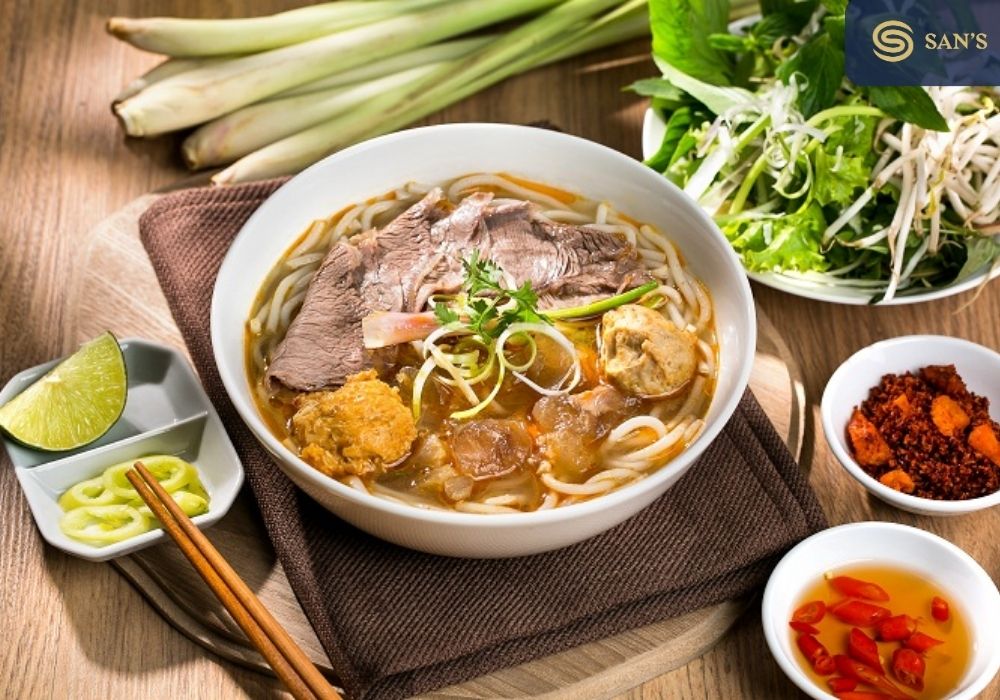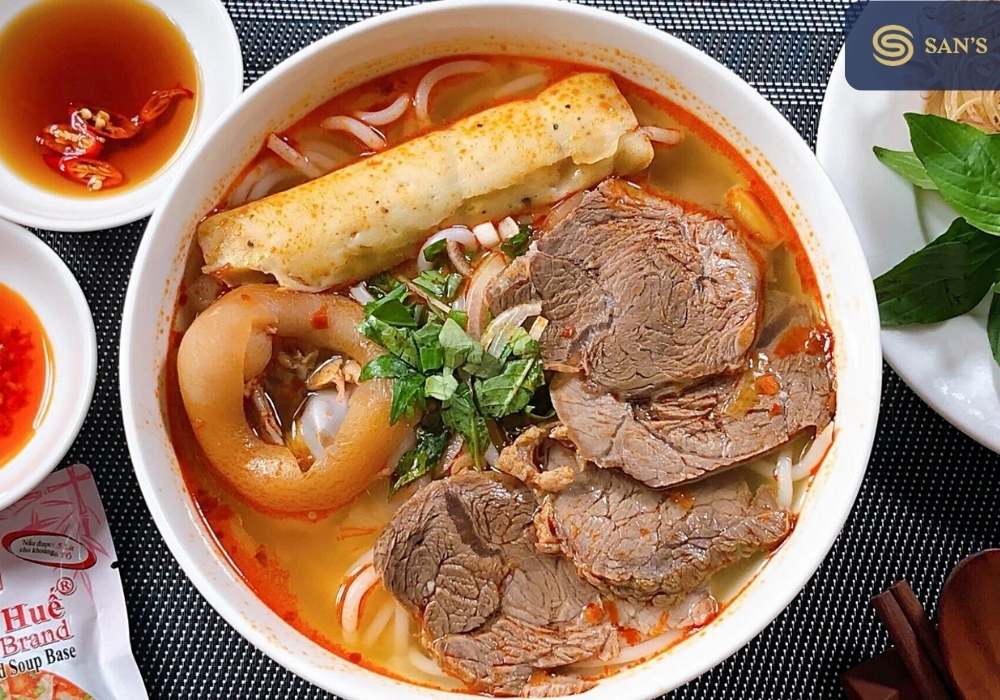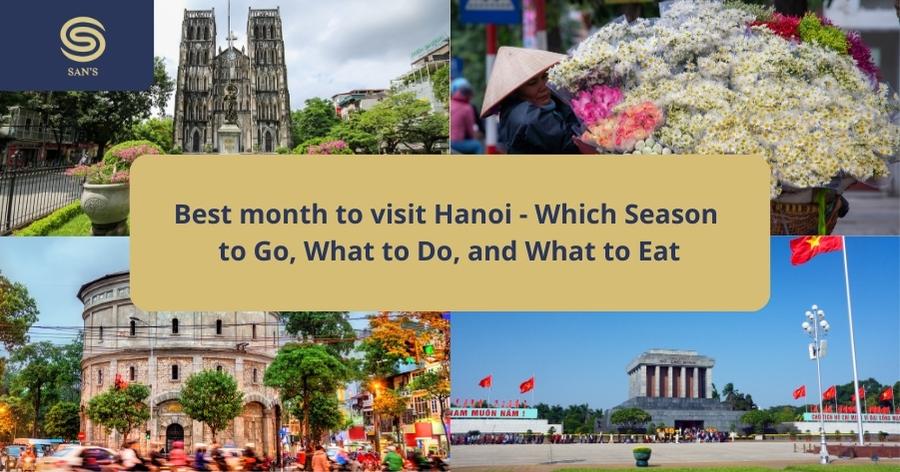Vietnamese cuisine, with its symphony of flavors, textures, and aromas, paints a vibrant culinary picture that takes eaters on a journey through the country’s rich history and diverse regions. From the delicate broths of the north to the robust flavors of the south, each dish tells a story of cultural influences, local ingredients, and time-honored traditions. Amidst this gastronomic orchestra, there’s a spicy, soul-warming noodle soup that captures the very essence of Central Vietnam: “bun bo hue.”
-

Bun bo Hue
Originating from the imperial city of Hue, “bun bo hue” is much more than just a noodle soup. It’s a harmonious blend of spicy, sour, sweet, and umami flavors, crowned with tender pieces of beef and pork. While pho might claim international fame, those in the know will whisper reverently about the rich depth and fiery spirit of “bun bo hue.” As we delve deeper into the intricacies of this dish, prepare to be enchanted by the tales and tastes of Central Vietnam’s culinary masterpiece.
Historical Roots
The majestic city of Hue, once the imperial capital of Vietnam, has long been a beacon of cultural, artistic, and culinary heritage. The city’s history is filled with tales of emperors and their royal feasts, and amidst these tales emerged a dish that, over the years, became synonymous with Hue’s culinary identity: “bun bo hue.”
Originally crafted for the royals, “bun bo hue” epitomizes the essence of Hue – a blend of refinement and robustness. The dish was created to satisfy the palates of emperors who demanded excellence in every meal. As such, the balance of flavors, the quality of ingredients, and the meticulous preparation method were all born from a demand for perfection.
Over time, as the gates of the royal palaces opened and the dish ventured into the streets and homes of Hue, it became a meal that was not only reserved for the elite but relished by commoners and travelers alike.
While Vietnam boasts a plethora of noodle dishes, each with its own unique identity, “bun bo hue” stands out in a league of its own. Unlike the gentle, star-anise-scented broth of pho, “bun bo hue” presents a bolder, spicier broth infused with lemongrass and annatto seeds, resulting in its signature reddish hue.
The inclusion of both beef and pork, and sometimes even congealed pig’s blood, offers a more complex meaty profile, deviating from other singular meat-based Vietnamese soups. Furthermore, the thicker rice noodles used in “bun bo hue” provide a different bite and texture, making the eating experience distinctively rich and satisfying.
In essence, while many Vietnamese noodle soups woo with subtlety, “bun bo hue” captivates with its depth and dynamism, offering a taste of the historical and culinary richness of the Hue region in every bite.
Ingredients & Preparation
Vietnam’s “bun bo hue” is a symphony of flavors and textures, and each ingredient plays a pivotal role in crafting its unique taste.
- Beef Shank: This is the primary meat, chosen for its lean yet flavorful profile. When simmered, it imparts a robust meaty essence to the broth.
- Pork Knuckle: This ingredient contributes a richer depth, with its collagen and marrow enhancing the soup’s body, making it slightly thicker and more luxurious.
- Lemongrass: Central to “bun bo hue” is the aromatic punch of lemongrass. Its citrusy notes help balance the richness of the meat and add a refreshing dimension to the broth.
- Annatto Seeds: Beyond imparting the broth with its characteristic reddish tint, these seeds infuse the soup with a subtle earthy flavor, elevating its complexity.
- Rice Vermicelli: Unlike the thin noodles in pho, “bun bo hue” employs round and slightly thicker noodles, offering a chewier texture that stands up well against the bold soup.
Preparation Process:
- Broth Creation: Start by simmering beef shank and pork knuckles in water with a pinch of salt. The simmering should be gentle to ensure clarity in the broth. Skim off impurities that rise to the surface.
- Lemongrass and Annatto: Toast annatto seeds in oil until the oil turns a vibrant red. Remove the seeds and sauté finely chopped lemongrass in this annatto oil until fragrant. This mixture is then added to the simmering broth, giving it both color and aroma.
- Seasoning: Once the meats are tender, they’re removed, and the broth is seasoned with fish sauce, sugar, and sometimes shrimp paste for an umami boost.
- Noodles: Rice vermicelli is boiled separately until just tender, then rinsed in cold water to halt the cooking and retain a springy texture.
- Assembly: In a serving bowl, place a handful of noodles, slices of beef shank, and pieces of pork knuckle. Pour the hot, aromatic broth over these, ensuring the meat is submerged and noodles are drenched.
Spicy Chili Oil:
A defining element of “bun bo hue” is its spice. While the main broth is mildly spicy, diners are provided with spicy chili oil (often with roasted peanuts) to adjust the heat to their preference. This oil, infused with fiery chilies, adds a kick that elevates the dish’s warmth and zest. It complements the citrusy notes of lemongrass and the earthy undertones from annatto seeds, making every spoonful an exploration of flavor.
In its entirety, “bun bo hue” is more than just a noodle soup; it’s a dance of contrasting and harmonious elements, each step carefully choreographed to offer a taste of Vietnam’s rich culinary tapestry.
The Vietnamese culinary journey is a tapestry of flavors, traditions, and tales, with each dish narrating a story of its origin, evolution, and cultural significance. “Bun bo hue“, in all its spicy, savory, and soulful glory, stands as a testament to this rich legacy. Originating from the historic city of Hue, this dish transcends its simple list of ingredients to represent the resilience, pride, and artistry of its people.
The deep flavors of the broth, the tenderness of the meats, the chewiness of the rice vermicelli, and the aromatic presence of herbs and spices aren’t just components of a dish; they’re the embodiment of centuries of culinary expertise and tradition. They evoke tales of ancient emperors and common folk alike, all united by their love for a heartwarming bowl of “bun bo hue“.
As you embark on your own culinary adventures, be it in the bustling streets of Vietnam or the cozy confines of a restaurant halfway around the world, we invite you to savor every spoonful of “bun bo hue“.
Dive deep into its layers of flavor, appreciate the craftsmanship behind each bowl, and allow its rich history to envelop you. In doing so, you aren’t just enjoying a meal, but becoming a part of a story that has been lovingly told and retold, one bowl at a time.
FAQs:
1. What is the primary difference between “bun bo hue” and “pho”? “Bun bo hue” originates from Central Vietnam and features a spicy, robust broth infused with lemongrass and annatto seeds. It uses thicker rice noodles and a combination of beef and pork. “Pho”, on the other hand, is a milder soup, primarily with star anise-flavored beef or chicken broth, and is served with flat rice noodles.
2. Is “bun bo hue” spicy? Traditionally, “bun bo hue” has a kick of spice, thanks to the chili oil and fresh chilies. However, many places allow you to adjust the level of spiciness according to your preference.
3. How healthy is “bun bo hue”? “Bun bo hue” is relatively balanced in terms of nutrition. The broth is rich in minerals and vitamins, while the meats provide protein. The fresh herbs add fiber and various health benefits. However, like many restaurant dishes, it can be high in sodium, so it’s good to consume in moderation.
4. Are there vegetarian or vegan versions of “bun bo hue”? Yes, vegetarian and vegan versions of “bun bo hue” are available, especially in areas with significant Buddhist populations. Instead of beef and pork, these versions might use tofu, mushrooms, and other plant-based ingredients while omitting any animal-derived products in the broth.
5. Where can I find the best “bun bo hue” in Vietnam? While Hue, being the birthplace of the dish, boasts numerous traditional eateries offering authentic “bun bo hue”, you can also find delicious bowls in major cities like Ho Chi Minh City and Hanoi. It’s always a good idea to ask locals for their favorite spots or look for places bustling with residents.
6. Can “bun bo hue” be made at home? Absolutely! While the dish has a variety of ingredients and steps, with the right recipe and a bit of patience, you can recreate this flavorful dish in your kitchen.
7. Is “bun bo hue” typically consumed for any particular meal? In Vietnam, it’s common to enjoy “bun bo hue” for breakfast or lunch. However, due to its hearty nature, it can be savored at any time of the day.
8. Are there any particular side dishes or beverages that complement “bun bo hue”? “Bun bo hue” is often enjoyed with a side of fresh herbs, bean sprouts, and lime wedges. For beverages, locals might opt for iced tea or “nuoc sam,” a sweet herbal drink.









